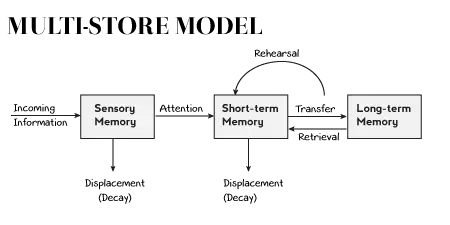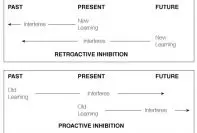Memory is a much complicated concept than what is generally understood. The general understanding of memory is storing certain information. But, the definition is too vague to be used as a complete definition of memory.
There are different types of memory:

- Sensory Memory
The part of memory where any information is first registered is called Sensory Memory. Although sensory memory has a large capacity, it corresponds approximately to the initial 200-500 milliseconds after an item is perceived. A simple example of sensory memory is to look at an item, and remember what it looked like with just a second of observation, or memorization. Degradation of this kind of memory is remarkably quick, as this type of memory stores information as it senses, regardless of the body’s consciousness. - Short-Term Memory
It’s a primary or active memory that is capable of holding small amount of information for a brief period of time. This form of memory is capable of storing information for 30 seconds or even less without rehearsal. Rehearsal and Chunking are two basic methods that can be used to prevent the eradication of information, and the information can be then switched from Short-Term Memory (STM) to Long-Term Memory. - Long-Term Memory
This form of memory is a memory store capable of storing large quantities of information for potentially unlimited duration.
Basic idea of memory in a mass is usually mistaken with Long-Term Memory alone. Going deeper into the topic, there are different characteristics that affect the long term memory. A classic example of LTM is being able to remember incidents from our childhood.
Atkinson-Shriffin Model
Richard Atkinson and Richard Shriffin created a memory modal, also called Multi-Store Model, which is comprised of three stages from Sensory, Short-Term and Long-Term Memory. This concept defines as three individual stages rather than a “whole” unitary process. This concept of memory model remains as the most popular model for studying memory ever since its inception in 1968. It is also widely known as Process of Memory.

The above figure clearly illustrates how an incoming memory works through different stages of memory to be imprinted as a part of us.
Alternative Model
An alternative model was offered by Fergus Craik and Robert Lockhart in 1972, which was called levels of processing model. The concept stated that the process of information being stored in a memory occurs as a part of a function of mental-processing’s depth on a continuous scale from shallow (perceptual) to deep (semantic).
Unlike the popular Multi-Store Model, this does not follow any structure, and short term and long term memory have no differences between them.



